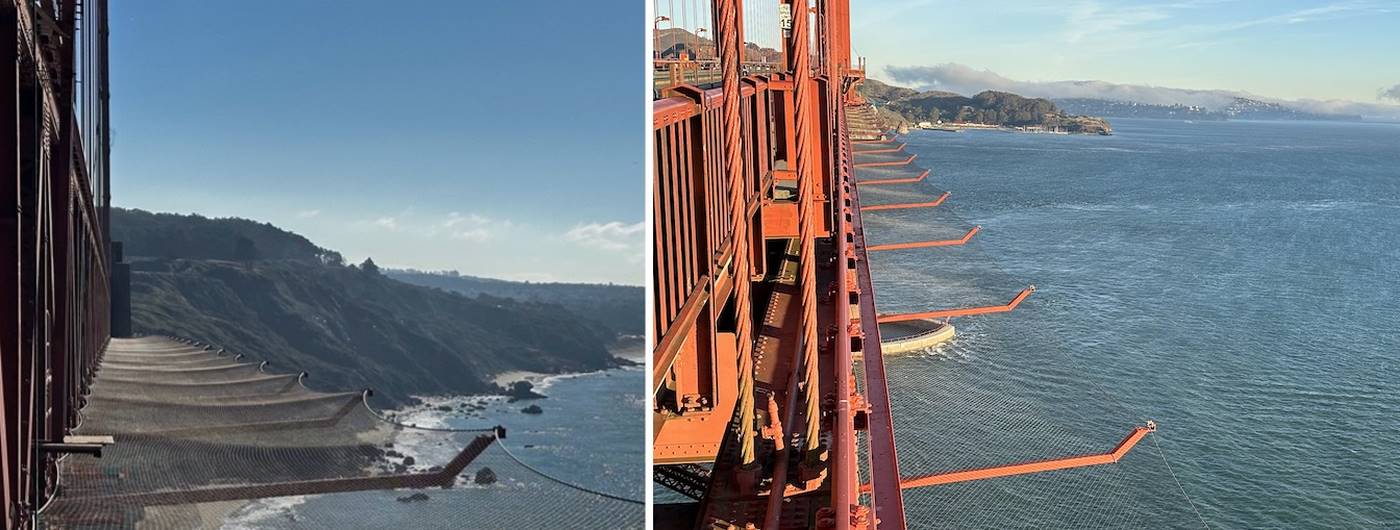Heroes
Golden Gate Bridge Safety Nets Save Lives, Reduce Suicides

Quick Smiles:
- Safety nets on the Golden Gate Bridge have led to a 73% drop in suicides.
- Interventions by third parties increased significantly during and after net installation.
- Rescue teams are trained and ready to respond swiftly to incidents involving the nets.
The Golden Gate Bridge, once a notorious site for suicides, has witnessed a remarkable transformation thanks to the installation of safety nets. Recent research highlights a 73% reduction in suicides since these nets were put in place.
In just 12 months, the number of individuals jumping from this iconic San Francisco landmark has declined sharply. Dr. Sangsoo Shin, a study author, noted, “Early evidence indicates that the installation of safety nets on the Golden Gate Bridge in San Francisco has been successful in reducing the number of suicides at the bridge.”
This initiative faced its share of challenges, including construction delays and opposition from individuals concerned about altering the bridge’s appearance. Critics argued that those intent on ending their lives might simply find other means or attempt to jump again after landing on the nets.
To assess the effectiveness of the safety nets, researchers analyzed suicide rates over three distinct periods: before (January 2000 to July 2018), during (August 2018 to December 2023), and after installation (January 2024 to December 2024).
The data revealed that before the nets, there were 2.48 suicides per month, which decreased to 1.83 during the installation phase and further dropped to 0.67 after the nets were fully operational. This significant decline underscores the impact of the safety nets.
Moreover, the number of third-party interventions saw a notable increase, rising by 75% during the installation and by 34% after. These interventions are crucial in preventing potential tragedies.
In instances where individuals fall into the nets, which are made of stainless steel and positioned 20 feet below the bridge deck, trained professionals are ready to perform rescues. The bridge district staff have been collaborating with local fire departments and law enforcement to ensure timely and efficient responses to such incidents.
Dr. Shin emphasized the broader implications of this study, stating, “There are many high-risk places around the world where people die by jumping from heights. Our study provides further evidence to policymakers that barriers are highly effective means of reducing suicide at bridges.”
This research not only highlights the success of the safety nets but also challenges preconceived notions. It serves as a reminder of the importance of evidence-based decision-making in addressing complex issues.
The Golden Gate Bridge’s safety nets stand as a testament to the power of innovative solutions in saving lives and offer hope for similar interventions worldwide.

-

 Cute Animals2 years ago
Cute Animals2 years agoPuppy Love Patrol: Service Dog Swoons Over K9 Officer Neighbor
-

 Cute Animals2 years ago
Cute Animals2 years agoHugs, Hooves, and Happiness: Newborn Donkey Steals Hearts by Demanding Affection [Video]
-

 Cute Animals2 years ago
Cute Animals2 years agoWATCH: A German Shepherd’s Surprising Parenting Instinct for Lost Ducklings!
-

 Cute Animals2 years ago
Cute Animals2 years agoPetty Pup Pulls Off Hilarious Bone Heist [Video]
-

 Heroes2 years ago
Heroes2 years agoA Lost Dog’s Bark Leads to a Lifesaving Discovery
-

 Cute Animals2 years ago
Cute Animals2 years ago“Pure Love”: Adopted Rescue Dog Can’t Hide How Grateful He Is [Video]
-

 Cute Animals2 years ago
Cute Animals2 years agoTiny but Mighty: Cat with Dwarfism Becomes Internet Star as Owners Adapt Backyard for Her Comfort
-

 Cute Animals2 years ago
Cute Animals2 years agoAdorable Puppy Steals Hearts After a Tiring Swim [Video]